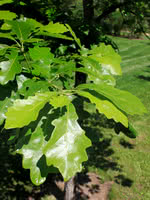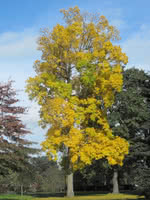Mon-Fri 9am - 5pm Mountain time
Bur Oak vs Bitternut Hickory
Quercus macrocarpa
Carya cordiformis
NOT AVAILABLE THIS SEASON - MIGHT RETURN
Bur Oak has a wide distribution but is one of the only oaks that will grow well on the prairies. Bur Oak produces deeply lobed, dark green leaves that turn golden yellow to brown in the fall.
Its acorns are round and half enclosed by a mossy fringed cup.
Although slower growing, this long lived tree eventually becomes a popular large ornamental tree for driveways, parks, and the front of industrial buildings. Popular as a memorial or dedication tree.
Note: Most Oak species can be considered toxic for many animals.
Bitternut Hickory is a large deciduous tree that makes a great shade tree for yards and parks. This tree is native to Eastern North America. Although it produces nuts, they are bitter and inedible. Some consider this wood to be the best flavour for smoking meats.
Plant Bitternut Hickory in it’s forever home. It is difficult to transplant due to its long taproot, and may not survive.
The wood is strong and has historically been used for wheels, ladders, and furniture.

